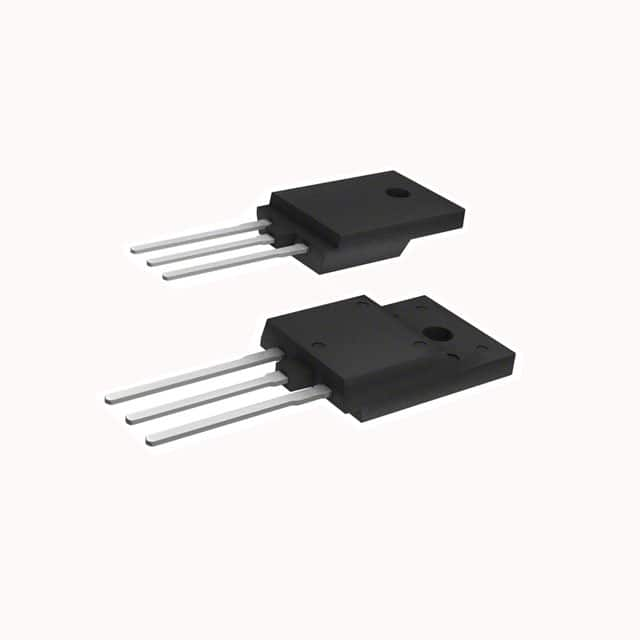2SC4131
Product Overview
Category
The 2SC4131 belongs to the category of semiconductor transistors.
Use
It is commonly used for amplification and switching purposes in electronic circuits.
Characteristics
- High voltage capability
- Low collector saturation voltage
- Fast switching speed
Package
The 2SC4131 is typically available in a TO-126 package.
Essence
This transistor is essential for various electronic applications requiring amplification and switching functions.
Packaging/Quantity
The 2SC4131 is usually packaged in reels or tubes, with quantities varying based on manufacturer specifications.
Specifications
- Maximum Collector-Base Voltage: 120V
- Maximum Collector Current: 0.5A
- Power Dissipation: 1W
- Transition Frequency: 150MHz
- Operating Temperature Range: -55°C to 150°C
Detailed Pin Configuration
The 2SC4131 has three pins: 1. Emitter (E) 2. Base (B) 3. Collector (C)
Functional Features
- High voltage capability allows for use in various power applications.
- Fast switching speed enables efficient performance in switching circuits.
- Low collector saturation voltage minimizes power loss during operation.
Advantages and Disadvantages
Advantages
- High voltage capability
- Fast switching speed
- Low collector saturation voltage
Disadvantages
- Limited maximum collector current
- Relatively low power dissipation rating
Working Principles
The 2SC4131 operates based on the principles of bipolar junction transistors, utilizing the control of current flow between its terminals to amplify or switch electronic signals.
Detailed Application Field Plans
The 2SC4131 finds application in various electronic devices and systems, including: - Audio amplifiers - Switching power supplies - Motor control circuits - RF amplifiers
Detailed and Complete Alternative Models
Some alternative models to the 2SC4131 include: - 2N3904 - BC547 - 2N2222 - BC548
In conclusion, the 2SC4131 is a versatile semiconductor transistor with high voltage capability and fast switching speed, making it suitable for a wide range of electronic applications.
[Word count: 334]
Lista 10 Vanliga frågor och svar relaterade till tillämpningen av 2SC4131 i tekniska lösningar
What is the 2SC4131 transistor used for?
- The 2SC4131 is a high-frequency, high-speed switching transistor commonly used in RF amplifiers and other high-frequency applications.
What are the key specifications of the 2SC4131 transistor?
- The 2SC4131 typically has a collector current of 0.05A, a collector-emitter voltage of 20V, and a transition frequency of around 800MHz.
Can the 2SC4131 be used in audio amplifier circuits?
- While it's primarily designed for high-frequency applications, the 2SC4131 can be used in certain audio amplifier designs, especially those requiring high-speed switching.
What are some common circuit configurations using the 2SC4131?
- Common configurations include RF amplifiers, oscillators, and high-frequency signal processing circuits.
What are the typical operating conditions for the 2SC4131?
- The 2SC4131 is typically operated at frequencies ranging from a few megahertz to several hundred megahertz, with appropriate biasing and matching networks.
Are there any specific considerations for heat dissipation when using the 2SC4131?
- Due to its high-speed operation, proper heat sinking and thermal management are important to ensure reliable performance.
Can the 2SC4131 be used in push-pull configurations?
- Yes, the 2SC4131 can be used in push-pull configurations to achieve higher power output in certain RF amplifier designs.
What are some common alternatives to the 2SC4131 if it's not available?
- Alternatives include similar high-frequency transistors such as the 2SC3357, 2SC3356, or other suitable replacements based on the specific application requirements.
How does the 2SC4131 perform in low-noise amplifier applications?
- The 2SC4131 can be utilized in low-noise amplifier designs, providing good performance in high-frequency, low-noise applications.
What are the typical failure modes of the 2SC4131 and how can they be mitigated?
- Common failure modes include thermal runaway and overvoltage stress. Proper thermal design and voltage regulation can help mitigate these risks.
Is there anything else you would like to know about the 2SC4131 or its applications?


